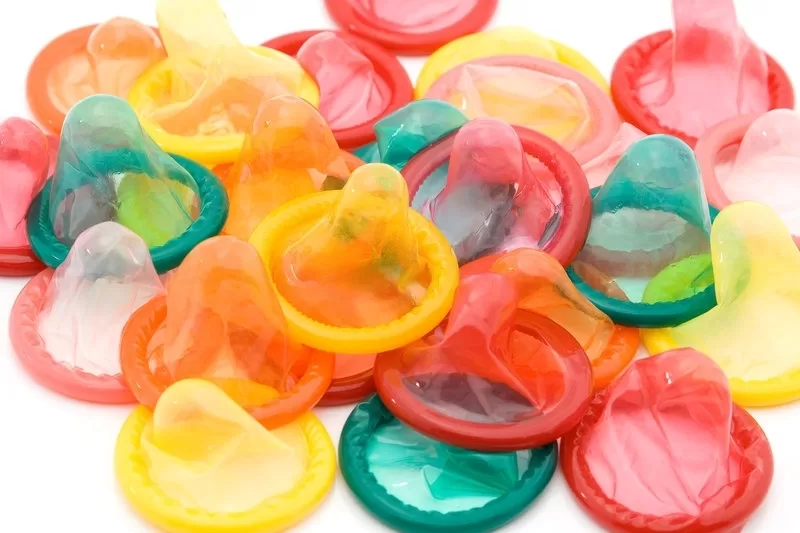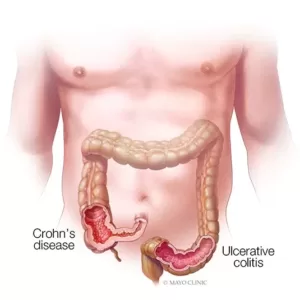Condoms are a type of barrier contraceptive used during sexual intercourse to prevent pregnancy and reduce the risk of sexually transmitted infections (STIs). In order to prevent the spread of sexually transmitted diseases (STDs) and infections, people use condoms, which are thin, loose-fitting pouches or sheaths (STIs).
Condoms are used to prevent pregnancy because they stop sperm from getting into the uterus and fertilizing an egg. Condoms are easy to find in the general goods section of grocery stores, drug stores, and convenience stores.

What are condoms used for
Condoms are used to prevent unwanted bodily contact. They filter ejaculate, which is also called sperm so that no sperm can get into your partner’s uterus and cause a pregnancy. Condoms help stop the spread of sexually transmitted diseases by stopping or greatly reducing the transfer of bodily fluids. They are made of thin, stretchy material and are worn over the penis (male condoms) or inserted into the vagina (female condoms) before sexual activity.
Herpes simplex virus (HSV) can be prevented, along with other sexually transmitted diseases, when condoms are used regularly and correctly. More than that, they are 71%–80% effective at preventing the spread of the human immunodeficiency virus (HIV). They are also very effective in preventing pregnancy.
Small, medium, large, and even XL condoms are available. An improperly fitting condom can have serious consequences. An ill-fitting condom isn’t just uncomfortable; it also decreases the condom’s effectiveness, which raises the risk of becoming pregnant or contracting a sexually transmitted disease.
Condoms are considered to be one of the most popular and effective forms of contraception worldwide, and there are several reasons why they are the contraceptive of choice for many people.
First and foremost, condoms are widely accessible and affordable. They are available over the counter at drugstores, grocery stores, and even vending machines in public places. Many health clinics and organizations also distribute condoms for free as part of their efforts to promote safe sex and prevent the spread of STIs. Also, condoms are relatively cheap compared to other methods of birth control. This makes them a good choice for people and couples of all income levels.
Secondly, condoms are highly effective in preventing pregnancy and STIs. When used correctly and consistently, male condoms have a 98% effectiveness rate in preventing pregnancy, while female condoms have a 95% effectiveness rate. Condoms are also the only form of contraception that can provide protection against STIs, including HIV, chlamydia, and gonorrhea. While some STIs can still be transmitted even with condom use, the risk is significantly reduced.
Another reason why condoms are popular is that they are easy to use and require no special training or medical intervention. Anyone of any age or sexual orientation can use a condom, and they can be put in or taken out quickly and easily without a prescription or help from a doctor. This makes condoms a convenient choice for individuals who may not have regular access to healthcare or who may not want to use more invasive forms of contraception.
Furthermore, condoms have minimal side effects and do not interfere with hormonal balance. Unlike other forms of contraception, such as birth control pills or intrauterine devices (IUDs), condoms do not contain hormones that can disrupt the body’s natural balance. This makes condoms a safer and better choice for people who may already have health problems or who don’t want to use hormonal birth control.
Finally, condoms provide a level of control and autonomy over one’s own sexual health. By using condoms, people can help protect themselves and their partners from unwanted pregnancies and sexually transmitted infections (STIs). Condoms can also be used with other methods of birth control, like hormonal methods or being aware of your fertility, to give you more protection and peace of mind.
Condoms can be used with other contraceptives
Using a condom along with another method of birth control can make it even more effective. The use of a diaphragm, spermicide (a foam or jelly that kills sperm), or the pill (oral contraceptives) is a viable option. Talk to your doctor about your options for birth control to find the method that will work best for you. There are many other forms of contraception available in addition to condoms. Some common types of contraception include:
Birth control pills:
These are pills taken orally that contain hormones to prevent pregnancy by stopping ovulation or thickening cervical mucus to prevent sperm from reaching the egg.
Intrauterine devices (IUDs):
These are small, T-shaped devices that are inserted into the uterus by a healthcare provider. IUDs can be hormonal or non-hormonal and work by preventing fertilization or implantation of a fertilized egg.
Birth control implants:
These are small, flexible rods that are inserted under the skin of the upper arm by a healthcare provider. The implant releases hormones to prevent ovulation and thickens cervical mucus to prevent sperm from reaching the egg.
Birth control patches: These are patches worn on the skin that contain hormones to prevent pregnancy by stopping ovulation or thickening cervical mucus to prevent sperm from reaching the egg.
Vaginal rings:
These are small rings that are inserted into the vagina and contain hormones to prevent pregnancy by stopping ovulation or thickening cervical mucus to prevent sperm from reaching the egg.
Diaphragms:
These are soft, flexible domes that are inserted into the vagina and cover the cervix to prevent sperm from entering the uterus.
Cervical caps:
These are small, silicone caps that are placed over the cervix to prevent sperm from entering the uterus.
Sterilization:
This is a permanent form of contraception that involves surgery to prevent pregnancy by blocking or cutting the fallopian tubes in women or the vas deferens in men.
Various different types of condoms available
Condoms come in a variety of styles and materials. If you’re going to be engaging in sexual activity, stick to using just one condom type. When you use more than one condom, the friction between them makes it more likely that one will rip or tear. Some of the many varieties of condoms available are:
External condoms, also known as “male condoms,” are worn over the penis and catch sperm and ejaculate.
The internal (or female) condom: When used properly, a vaginal condom can prevent sperm from reaching the uterus. To facilitate removal, a pliable ring on the condom remains outside the vaginal canal. It’s possible that internal condoms aren’t as good at preventing sexually transmitted diseases as external (male) condoms.

Oral sex requires the use of a dental dam, which is a thin sheet of latex or polyurethane placed over one person’s mouth to prevent oral contact with the other person’s genitalia or anus. Using a dental dam can help prevent the spread of sexually transmitted diseases like HPV in the mouth and throat (HPV).
Finger condoms, also known as finger cots, are used during sexual acts performed with the fingers. The risk of getting pregnant from being fingered is extremely low. A finger condom can further reduce your risk for STDs, though the likelihood of contracting an STD from fingering is already quite low.
What are condoms made of?
Many people use the term “rubber” to refer to condoms. The reason is, latex, a type of rubber, is used to make the vast majority of external (male) condoms. Itchy, red, and irritated skin are just some of the symptoms of a latex allergy, which affects some people. If you or your partner have a latex allergy, you should avoid using condoms made of latex. Here’s what you should do instead:
Nitrile condoms, designed for women, are made of synthetic, non-latex material.
Polyurethane external (male) condoms (a type of plastic)
Condoms are made from natural materials, like skin or rubber. (It’s important to note that natural condoms do prevent pregnancy, but they are not advised for the prevention of sexually transmitted diseases.)
Lubricated and nonlubricated condoms
Lubricated condoms are made with a special substance that reduces the amount of resistance the user feels during sex. A condom’s chances of getting torn or ripped due to friction are higher. To prevent sperm from reaching the egg, some condoms are treated with spermicide. As the name implies, non-lubricated condoms do not contain any lubricant.
Any condom is compatible with any lubricant you buy at the store. When using a latex condom, it is recommended that you only use a water-based lubricant and not an oil-based one. Latex rubber becomes more easily damaged by oil and thus more likely to tear, break, or leak.
why it’s a good idea to use condoms
Only by using condoms can sexually active people avoid contracting sexually transmitted diseases. The same is true of their ability to stop pregnancy.
It’s important to remember that condoms aren’t a 100% effective solution to preventing pregnancy and sexually transmitted diseases, but they do significantly decrease the risk. At the moment, there is no condom that can guarantee that pregnancy or sexually transmitted diseases will never happen. Because of this, a lot of people supplement their condom use with spermicide foam or gel.
Condoms are used by many people to prevent pregnancy and lower the risk of sexually transmitted infections (STIs). They are generally thought to be safe and effective. However, like all forms of contraception, condoms come with some risks and potential side effects. In this article, we will discuss some of the risks associated with condom use and what to do if a condom breaks during intercourse.
One of the most significant risks associated with condom use is the possibility of condom failure. Condoms can break or tear during intercourse, which can increase the risk of unintended pregnancy and STIs. Condoms can break if they are used wrong, are the wrong size, or are exposed to heat or sunlight, which can weaken the latex material.
Another risk associated with condom use is the potential for allergic reactions. Some individuals may be allergic to latex, the material used to make most condoms. Symptoms of a latex allergy can include itching, redness, swelling, and hives. In severe cases, a latex allergy can cause anaphylaxis, a life-threatening allergic reaction. To avoid allergic reactions, individuals with latex allergies should use non-latex condoms, such as those made from polyurethane or polyisoprene.
Condom use can also have some minor side effects, such as reduced sensation during sex. Some individuals may find that condoms decrease sensitivity and pleasure during intercourse, which can make sex less enjoyable. Additionally, condoms can sometimes cause irritation or discomfort, especially if they are not properly lubricated or if they do not fit well.
Despite these risks, condoms remain one of the most effective forms of contraception and STI prevention. When used correctly and consistently, condoms can reduce the risk of unintended pregnancy and STIs by over 90%. People should follow these rules to get the most out of their condoms and reduce the risk of side effects:
Use condoms correctly:

Condoms should be put on before any genital contact occurs, and they should be used for the entire duration of sexual activity. Make sure to follow the instructions on the condom package carefully and use a new condom every time you have sex.
Choose the right size:
Condoms come in different sizes, so it is important to choose one that fits properly. A condom that is too tight or too loose can increase the risk of condom failure.
Use adequate lubrication:
Adequate lubrication can help prevent condom breakage and reduce irritation or discomfort. Choose a water-based or silicone-based lubricant, as oil-based lubricants can weaken the latex and increase the risk of condom failure.
Store condoms properly:
Condoms should be stored in a cool, dry place away from heat or sunlight. Do not use condoms that are past their expiration date or that have been stored improperly.
What if the condom breaks down while copulating
If a condom breaks during intercourse, it is important to take action to reduce the risk of unintended pregnancy and STIs. Here are some steps to follow if a condom breaks:
Stop intercourse immediately:
If a condom breaks during intercourse, stop immediately to reduce the risk of sperm or STI transmission.
Check for pregnancy:
If pregnancy is a concern, emergency contraception can be taken within 72 hours of unprotected sex to reduce the risk of pregnancy.
Get tested for STIs:
If there is a risk of STI transmission, get tested for STIs as soon as possible. Many STIs can be asymptomatic, so testing is important even if there are no symptoms present.
Consider HIV prophylaxis:
If there is a risk of HIV transmission, consider taking HIV prophylaxis, which involves taking antiretroviral medications to reduce the risk of HIV infection.
Can condoms get you pregnant?
Condoms are made to stop pregnancy by making a barrier that stops sperm from getting to an egg. However, no form of contraception is 100% effective, and there is always a small risk of pregnancy with condom use.
Condoms can help prevent pregnancy, but it depends on how they are used, how well they fit, and if there are any tears or other problems with the condom. When used correctly and consistently, male condoms have a 98% effectiveness rate in preventing pregnancy, while female condoms have a 95% effectiveness rate.
However, condoms can fail if they are used improperly, such as if they are not put on correctly, if they break or tear during use, or if they are used past their expiration date. Additionally, condoms may not be as effective if they are the incorrect size or if they have suffered damage from exposure to heat or light.
It is important to note that condoms do not provide protection against all types of sexually transmitted infections (STIs) and may not be as effective in preventing certain STIs, such as herpes or human papillomavirus (HPV). To lower the risk of getting an STD, it is important to use condoms along with other forms of protection, such as regular STI testing and treatment.
Even though condoms are very good at preventing pregnancy when they are used correctly and consistently, there is always a small chance that they won’t work. It is important to use condoms properly and in combination with other forms of protection to reduce the risk of unintended pregnancy and STIs. If you have concerns about the effectiveness of condoms or have experienced a condom failure, it is recommended that you speak with a healthcare provider about other forms of contraception or STI prevention strategies.
how does one insert a condom over Penis
Before inserting the condom, make sure your penis is standing straight. Carefully open the condom package at one end. Please wait to unroll the condom. Instead, rest it on your penis’s head (or tip) so it can unroll down its length. (It’s easy to unroll a condom the wrong way around by accident, so double-check before you get started.)
To create a nipple for the semen to collect in, leave a gap of about 1/4 inch at the tip and push the air out of the top. A nipple is an integral part of some types of rubber. Don’t ever put petroleum products like Vaseline or mineral oil on a latex condom. Lubricated condoms are available for purchase. Or you could try saliva, foam, or water as a lubricant.

Conclusion
Condoms are considered to be the most popular and most effective contraceptive used worldwide due to their accessibility, affordability, effectiveness, ease of use, minimal side effects, and ability to provide control and autonomy over one’s own sexual health. Even though there are other ways to prevent pregnancy, many people and couples still choose condoms because they are versatile and can protect against both pregnancy and STIs.
It’s important to remember that condoms are very effective, but they must be used correctly and consistently to offer the most protection. People should talk to a doctor to find out what kind of birth control will work best for their needs and preferences.
While condoms are considered a safe and effective form of contraception, there are some risks associated with their use. The risk of unintended pregnancy and STIs goes up when a condom breaks. This risk can be reduced by using a high-quality condom that is stored and used correctly.
If a condom breaks during use, it is important to take action to minimize the risk of unintended pregnancy and STIs. If you have concerns about the risks associated with condom use or have experienced a condom failure, it is recommended to speak with a healthcare provider about other forms of contraception or STI prevention strategies.
Disclaimer:
The author’s views are his or her own. The facts and opinions in the article have been taken from various articles and commentaries available in the online media and Eastside Writers does not take any responsibility or obligation for them.
Note: Contact our Writers at www.eastsidewriters.com for writing Blogs/Articles on any niche. We have experts in various domains from Technology to Finance and from Spirituality to Lifestyle and Entertainment.






